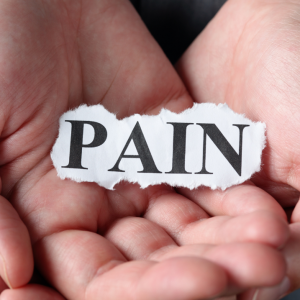Our bodies have a number of ways to deal with persistent pain. Like most areas of the body, the brain is able to adapt to changes in “normal” and can re-organise itself according to these new changes. Unfortunately this can lead to long standing pain that is abnormal in its intensity and that responds differently to how it was intended.
Pain exists as a protective mechanism for the body. When we injure our tissues, pain is the signal that our body uses to let us know when we are stressing the injured area too much which could detrimentally affect its recovery. While pain is often viewed negatively, it is actually a very helpful signal provided it resolves when the actual tissue damage is repaired. Unfortunately if pain persists for long enough, and sometimes where there are other complicating factors, this short term pain response can develop into chronic and persistent pain.
One of the features of chronic and persistent pain is that the nervous system increases it’s sensitivity through changes at both the site of the original injury pathway but also in the brain areas that are responsible for sensation to the affected area. These changes are often the most challenging to navigate, and the longer the pain persists, the more these changes are reinforced. Consider the case of phantom limb pain, where pain persists in an area that is no longer attached to the body. Exercising the affected area and manual treatment methods are not possible and hence management of pain must explore other avenues.
Fortunately, extensive research has been dedicated to both the understanding of chronic pain and also towards methods of restoring normal sensitivity and responsiveness of the nervous system. One of the more recent treatment techniques used to manage chronic pain is what is known as graded motor imaging which was developed by the NOI Group.
This technique has 3 core components:
- Restoring normal side to side body perception. In the presence of pain, our perception of the left or right side of our body changes. Re-training this ability to distinguish the left and right side of our body is an important part of normalising the sensation and in particular for re-organising the brain areas dedicated to each side.
- Explicit motor imagery. When pain has been persistent for long enough, often just thinking about certain movements or positions can trigger a feeling of pain or a sense that it will be painful. There is a great saying “if you think you can or you think you can not, you are right either way”. Simply put, if we believe something will hurt then it most likely will. Re-training this expectation through imagery that is non-threatening and changing the perception of pain to a neutral movement experience is important for recovery.
- Mirror therapy. Movement is a whole body experience where we rely on input from the muscles, joints and tissues but also from our eyes which help to orient our awareness of our body position. Mirror therapy uses the input from the eyes to feed positive movement experiences into the brain. By positioning the mirror so that the reflection of the non-painful side moving is perceived by your brain as the painful side (eg putting the mirror in front of your left arm so that you can see the reflection of your right arm on the left side of your body) you can “trick” the body into thinking that moving the affected side is not painful which again helps to normalise the sensitivity of the brain areas responsible for pain perception.
Some other natural strategies that you can use to help in the management of chronic pain include meditation and mindfulness, ensuring that you get enough sleep and recovery, and of course staying active!

